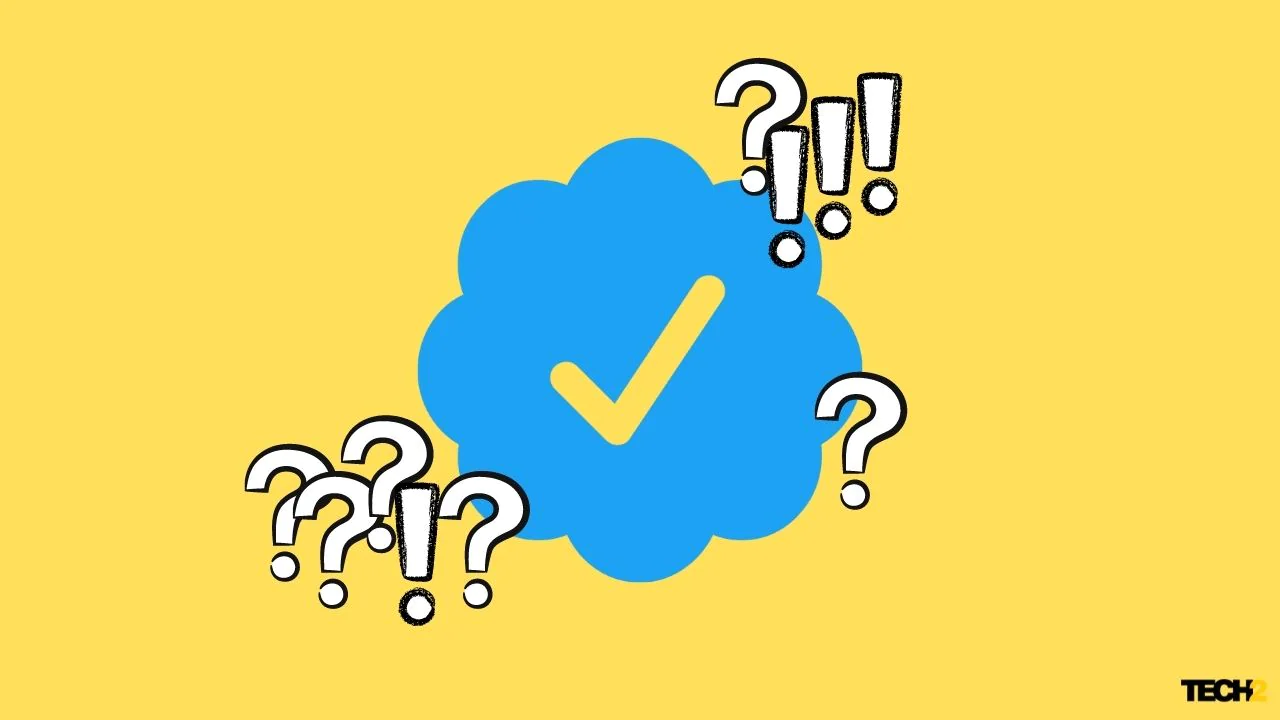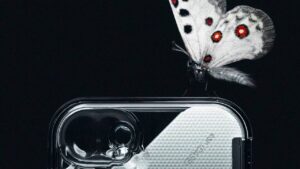Nandini YadavJul 14, 2021 17:38:11 IST
In May this year, Twitter relaunched its profile verification process. Along with it, Twitter also announced a new policy for verification, based on public feedback, to make verification eligibility criteria more clear. Despite these attempts at transparency, Twitter’s verification policies are being questioned for their ambiguity.
Twitter Verification Process in 2021 ✅ pic.twitter.com/EAOw0kdFzx
— Overtime Gaming (@OvertimeGG) July 8, 2021
While Twitter has been sharing information on verification eligibility criteria, there is still a lack of clarity on how and why Twitter rejects an account.
Several Twitter users have complained that “less credible” accounts are being awarded the verification badge and that many other who met the stated criteria had their applications rejected.
Suzi Hunter is a YouTuber and Twitch partner with over 164,000 followers on Twitter, and she has been a user of the platform for 11 years. Her application was denied twice.
Denied twice in a row! I was told to use my Twitch channel as evidence to get verified. I guess whoever was doing the verification process couldn’t find the two giant clearly visible links to my Twitter page on my Twitch channel. pic.twitter.com/snU9tyfbZ1
— Suzi Hunter (@TheSphereHunter) July 12, 2021
American actress Nicole Tompkins was rejected.
Also denied lol.
— Nicole Tompkins (@NikiLeeTompkins) July 12, 2021
Steffan Watkins, an open source research consultant focused on debunking misinformation, with over 15,000 Twitter followers, was rejected.
Sorry to make it personal; could you explain how bots get approved, but I wasn’t? It makes a mockery of @verified. I’ve been quoted re OSINT in NYT, WaPo, NBCNews, published in Jane’s; my name is my brand, and from who has credited me, I think I’m real. ♂️https://t.co/xPkm7OLgZk
— Steffan Watkins ✈️ (@steffanwatkins) July 13, 2021
French-British actor JB Blanc, who has appeared in popular television series such as Breaking Bad and Better Call Saul, and films like The Incredible Hulk, was denied the blue tick.
Twitter has denied my application for verification because I’m not notable enough. A new career low. I don’t understand the system.
— JB Blanc (@thejbblanc) July 14, 2021
Activist and campaigner, Dr Amy Kavanagh, was also rejected.
I created a global campaign with #JustAskDontGrab
I sent 5 articles from the last 6 months referencing my activism, two from the BBC including a podcast released that day!
And my Shaw Trust disability 100 power list entry.
But apparently that’s not notable enough for @verified
— Dr Amy Kavanagh (@BlondeHistorian) July 13, 2021
Popular YouTube and reviewer, Gerald Undone, also rejected.
My Twitter Verification got denied again. I’ve tried twice using different methods. Not sure why it works for some of my friends on here with similar specs but not me… ♂️ Oh well.
— Gerald Undone (@GeraldUndone) July 8, 2021
While Twitter has made it ample clear that if an account is being rejected, the issue is most likely with the user’s application, Twitterati thinks the verification process itself is “arbitrary”.
A lot of my journalist friends have been denied verification on Twitter, while I see the badge given to less credible voices. The process is arbitrary for sure.
— Danish (@DanishKh4n) July 12, 2021
For instance, one of the eligibility criteria is that accounts are “authentic, notable, and active”. However, as found by data scientist @conspirator0, Twitter recently awarded the blue badge to six accounts, all of which have been created in June 2021, had roughly 1,000 followers, used stolen profile images, and had not posted a single tweet.
Two of these six accounts (@kayitlii and @aykacti) have photographs of people as their profile pics. Despite the presence of the blue verification checkmark, neither image is likely to depict the account holder as both images appear to be stolen. pic.twitter.com/IQnt9ZRFIZ
— Conspirador Norteño (@conspirator0) July 12, 2021
These 976 accounts are part of an astroturf botnet consisting of (at least) 1212 accounts. The network is split into followers, which follow the aforementioned verified accounts as well as other members of the botnet, and followees, which are followed by the other bots. pic.twitter.com/wKKfC2PRX8
— Conspirador Norteño (@conspirator0) July 12, 2021
29 of the remaining accounts have default profile pics and most of the others have pics that are used by multiple accounts in the botnet. We’ve seen networks that combine human, feline, and anime GAN pics with default and duplicate pics before:https://t.co/vAuErWLqm6
— Conspirador Norteño (@conspirator0) July 12, 2021
Late on Tuesday, Twitter responded to this saying that it has permanently suspended the “small number” of fake accounts it mistakenly verified.
Update: five of these six dubious verified accounts (along with the majority of the supporting botnet) have been suspended by Twitter. The sixth (@aykacmis) appears to have self-deactivated. pic.twitter.com/ee8l4CuVtB
— Conspirador Norteño (@conspirator0) July 12, 2021
“We mistakenly approved the verification applications of a small number of inauthentic (fake) accounts,” the micro-blogging platform said in a statement. We have now permanently suspended the accounts in question, and removed their verified badge, under our platform manipulation and spam policy,” it added. The fake verified accounts were spotted by Twitter user Conspirador Norteno, a data scientist focused on disinformation, who highlighted six newly-created accounts that had been verified,” Twitter said in a statement.
Twitter may have made a move in this case, but the question still remains how these accounts, that did not fulfil any eligibility criteria, get verified?
Twitter has ruled out the possibility of a malicious insider, but it’s still not acknowledging the problems in its verification process which is failing to catch the obviously inauthentic accounts.
If you are thinking that Twitter’s Machine Learning (ML) or Artificial Intelligence (AI) decisions could be behind this, Twitter’s Director of products has confirmed that a human reviews and decides on every application for verification that Twitter receives. Twitter only uses AI or ML to verify the authenticity of ID documents that people upload.
we do use ml/ai to verify the authenticity of id documents that people upload, but any issues with that process are flagged to the applicant before they hit submit
— B (@iamb) July 12, 2021
Twitter’s stance on the matter
Meanwhile, in a recent Twitter Spaces hosted by the platform, Twitter spoke about its verification policies, what it’s doing to make the process more transparent, and why some users may be getting rejected.
Twitter essentially says it’s user error.
Twitter Director of Product, B Bryne said during the Twitter Spaces conversation that a lot of people, especially journalists, are “getting rejected in their verification applications because of technical issues or small problems with their application, not because they’re not notable.”
Since a large number of journalists were among those who were rejected, last week, Twitter also shared a few suggestions on increasing their chances of verification:
“…in the policy we do require that journalists link to the publication in their bio. A lot of journalists don’t have the link in their bio and that results in rejection,” said Bryne.
He added, “we do require the journalists to be writing for organisations that are verified on Twitter, so it is important to make sure that the publisher or outlet gets verified before the journalists themselves. Of course, if they’re writing as a freelance writer, they can be sharing links from multiple different sources that they’re writing for, but if the outlet itself isn’t notable then we don’t consider the journalists’ writing port notable.”
In the application, journalists must link to their specific about page/bio, or to articles that reference them on the news org’s official site. Independent or freelance journalists must provide links to 3 articles in Verified publications in the 6 months before applying.
— Twitter Verified (@verified) July 9, 2021
Twitter also highlights that it’s important, especially for journalists, that the organisation that they link their work to, has a verified account as well.
Authenticity
If you’re using a website to verify your authenticity, it must be the website for a Verified organization. The website must also reference your name and Twitter account.
— Twitter Verified (@verified) July 9, 2021
In an attempt to add more clarity to the process, Twitter says that, from now on, its decision emails will give more context on why a user was rejected.
We’ve heard your feedback that we can be more clear on why an application didn’t get approved.
Decision emails will now give more context on why requests don’t meet our criteria. Here’s a breakdown of some things to note before applying again (after 30 days)
— Twitter Verified (@verified) July 9, 2021
Why is the blue tick even a thing?
Parallel to the ongoing conversation about Twitter’s verification process, its ambiguity, the eligibility criterion, there’s another budding argument: why does one even need the blue badge?
Why do you need a blue tick?
— Aritra (@Aritra_7) July 13, 2021
As Twitter defines it, the blue tick helps other users on the platform “distinguish the authenticity of accounts that are of high public interest”.
With undefined rules, Twitter is making it difficult for other users to grasp on the credibility of a verified account. In fact, theoretically, being denied verification, some users/accounts/organisation may also lose credibility. Additionally, with arbitrary awarding of the blue tick, the verification badge may also lose its importance. This can prove to be a problem, especially for freelances, small businesses/organisations, looking for work and/or reaching their audience via the platform.
Moreover, and for the most part, Twitter is a symbol of status and privilege, and an indicator of importance. And a user with a blue tick is placed in proverbial bold print at the centre of all searches – explore, discovery, hashtag search, name search. The blue tick next to a user’s name suddenly adds credibility to what they say. However, that very validation is under threat now.
Twitter’s verification system needs work
All of this is not a suggestion that Twitter is doing this on purpose, however, it is an indication that there is considerable room for improvement.
It’s possible that many users are messing up their applications, but the growing number of rejections of seemingly authentic accounts, and the pertinent case of bots being awarded the blue tick, shows that there maybe a bigger problem here.
Twitter needs to fill in the blanks in its policies before the blue tick loses its relevance.










